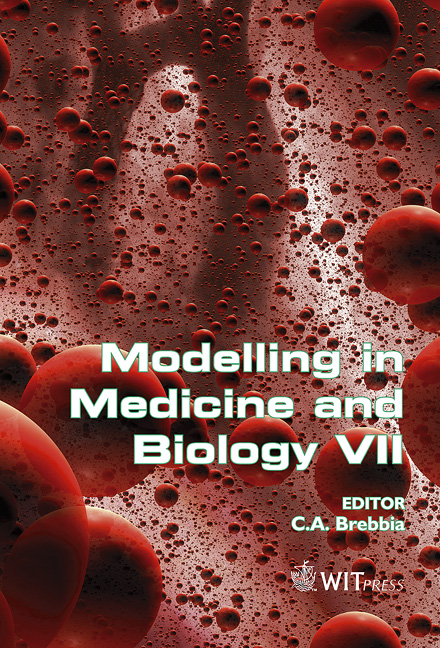Calculation Of Stress And The Absorption Of Angiotensin In The Left Ventricle Based On Two Dimensional Echocardiograms And MRIs
Price
Free (open access)
Transaction
Volume
12
Pages
8
Published
2007
Size
853 kb
Paper DOI
10.2495/BIO070031
Copyright
WIT Press
Author(s)
A. K. Macpherson, S. Neti, M. Averbach & P. A. Macpherson
Abstract
A cardiologist could make a more accurate diagnosis if the data on the stress and absorption of Angiotensin II in the patient were more readily available. Currently one of the most widely used diagnostic tools is the two dimensional echocardiogram which can generate information to predict levels of stress. An MRI of the heart provides full volumetric coverage of the heart and is more accurate than echocardiograms in calculating left ventricular function. For example in one instance the calculation of the ejection fraction based on echocardiograms was measured to be 65 percent but use of MRI resulted in 79 percent ejection. The calculation of stress must be accomplished quickly so that the information can be integrated with other clinical information to assist with decision making. Presently this requires that the MRI results be limited to two dimensions. The present study compares the boundary conditions for stress calculations obtained from echocardiograms with those using two dimensional MRI data. An obstacle is that the two dimensional slice shown by an echocardiogram is difficult to relate to a slice of an MRI. It is shown that errors in using echocardiograms can be significant at the end of systole when myocardial stresses may be maximal. This is particularly true around the apex where the stress is often considerable. Using the MRI data, results of stress calculations are presented as well as the conditions for the absorption of Ang II. The results are significantly different from those calculated using echocardiograms. Keywords: left ventricle, echocardiograms, MRI, ventricular stress, clinical diagnosis, blood flow.
Keywords
left ventricle, echocardiograms, MRI, ventricular stress, clinical diagnosis, blood flow.





